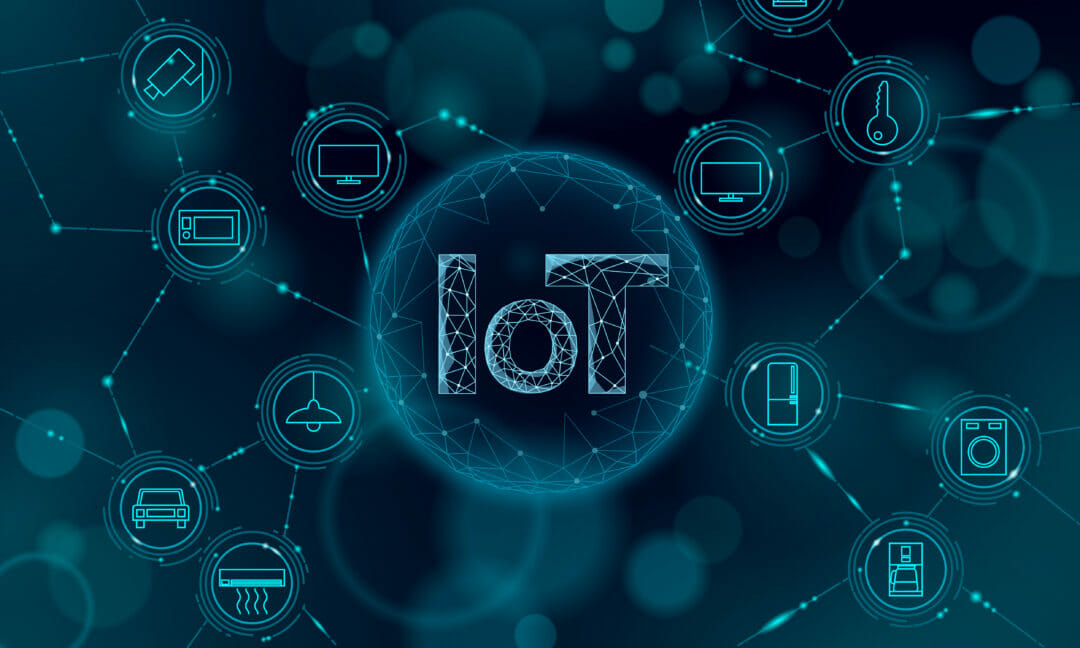The ongoing concerns about climate change and the world’s unsustainable energy use have starkly highlighted the need to increase our energy efficiency and live more sustainably. In order to achieve these aims, the Internet of Things (IoT), which enables smart devices to exchange data with one another, holds great promise to help us make more efficient use of our energy resources. In particular, electric vehicle charging and smart metering in residential areas are two fields that have benefited tremendously from smart devices in cutting emissions.
The spectre of climate change, as well as the generally unsustainable use of the world’s energy resources, have highlighted the paramount importance of undertaking an energy transition in earnest. Of the utmost importance is the need to decrease our dependence on fossil fuels and concomitantly the global carbon footprint. As it is, a large part of global carbon emissions stem from residential buildings as well as gasoline burning cars. Thus the increasing use of smart metering technologies to monitor residential energy consumption as well as there being a greater number of electric vehicles on the road can help us in decreasing carbon dioxide emissions.
While the need for decreasing carbon dioxide emissions is nowadays widely understood to the point of being trivial, the role of increasingly “smart” computing resources – the Internet of things (IoT) enabled by cutting-edge connectivity standards – in decreasing carbon dioxide emissions has been only insufficiently well publicised. Yet, IoT connectivity can do a tremendous part in achieving the world’s energy transition goals and help in delivering energy efficient and sustainable solutions for a smart society.
How IoT is enabling the digitally connected enterprise
IoT helps the energy transition
A recent study by 6GWorld indicates that by 2030, IoT solutions will bring about a reduction in electricity consumption of about 1.6 petawatt-hours (PWh), which the authors calculated is enough to cover over 136.5 million homes’ energy use for one whole year. The benefits of IoT devices for a more sustainable and smart society abound, and in this regard the continued drive to go green will in turn lead to a greater deployment of IoT solutions worldwide – with this, a virtuous circle will ensue.
Two examples of how IoT helps the energy transition are smart metering technologies as applied in residential homes as well as in electric vehicle charging. Both of these technologies are enabled by the connectivity of smart devices.
Smart metering – an essential part of our energy transition
Smart metering refers to IoT-enabled survey and control sensors that acquire data, interact with one another and transfer data among themselves in real-time. Smart metering technologies thereby enable utility providers and consumers alike to integrate these sources of energy more efficiently into the grid, which in turn optimises grid utilisation.
Adoption of smart metering technologies in residential areas has taken off in both the USA and Europe over the past few years. In 2020, the US Federal Energy Regulatory Commission (FERC) reported that smart metering had reached a 57% penetration rate in the US market. Similarly, in the European Union (EU), member states had made commitments to roll out over 200 million smart meters for electricity as well as 45 million for gas by 2020.
Smart metering units in residential areas allow consumers to gain clarity on their energy use, while they enable electricity providers to better monitor the system and bill their customers more in accordance with their actual energy use.
Facilitating change: the smart benefits of going green
Connected devices make EV charging “smart”
EV charging stations are also becoming “smart” and this helps in accelerating the ongoing rollout of EV charging infrastructure and the electrification of the world’s car fleet through “smart charging”.
The chief concern of smart charging is to enable EV charging equipment providers to shift usage of the charging stations away from peak hours, in order to balance out the use of electricity grids and space electricity consumption out more evenly throughout a day or week. If all electricity was consumed during peak hours, this would put substantial strain on a utility provider’s infrastructure. As more and more people start driving electric vehicles, mitigating this issue will become more important for utility providers.
Leveraging data on the peak hours in any locality, a smart charging management platform can optimise a charge schedule by distributing it over off-peak hours, reducing the stress on the grid while lowering the energy bill for EV owners. Such a platform also allows public and semi-private charge point operators to better manage and balance the load to avoid cost-intensive charges and reduce the carbon footprint.
Yet this requires a constant exchange of data between EVs, charge stations, and utility providers, something that has been achieved through connected devices embedded in each charging station. In particular the adoption of charge point communication protocols like the Open Charge Point Protocol (OCPP) has been a tremendous step forward in enabling EV charging devices to talk to each other as well as the electric vehicle docked onto them.
Connectivity is essential for the Internet of things
The Internet of Things needs continuous connectivity of smart devices to function effectively. Added to this are various operational and control systems to enable utility providers to analyse their data feeds, as well as to manage and troubleshoot any problems with the devices if necessary.
Yet “connectivity” isn’t “connectivity”, as there are various types of connectivity solutions depending on the needs of the application in question. A smart device can be connected via a variety of standards, not necessarily via a cellular standard such as 3G, 4G LTE or 5G. For some applications short-range connectivity solutions, such as Wi-Fi, Bluetooth, or Zigbee may well be the better choice.
That said, if a device manufacturer wants to connect their smart products out-of-the-box at distributed customer premises, cellular IoT is the best solution.
Yet, while it might be tempting to connect IoT device fleets through an incumbent mobile network operator, or a mobile virtual network operator (MVNO), this is inadvisable, as a device manufacturer would be exposed to the operator’s siloed infrastructure as well as a cellular network that is local in character and not globally scalable.
IoT applications will become increasingly cloud-driven
The biggest trend is that IoT applications are becoming increasingly cloud-driven. In this context, a cloud-native IoT Communications Platform as a Service (CPaaS) presents unique advantages for smart, connected solutions. A cloud-native IoT CPaaS brings easier integration as well as advanced security concepts, like the provision of intra-cloud connection that enables secure data communication without using the public Internet. Furthermore these new platforms provide users with both higher reliability and scalability with managed cloud services as well as enhanced data privacy and compliance by using a distributed architecture in multiple cloud regions to keep data processing local.
Thus, cloud-native networks are in sum the best option for manufacturers looking to connect their IoT devices in a network. Furthermore, cloud-native IoT platforms will see a tremendous growth over the next few years, with consultancy Gartner projecting that by 2023, 10% of all managed machine-to-machine (M2) communication will be provided by cloud providers, up from less than 1% in 2018.
Modern technology providers enable customers to use end-to-end cloud native network architecture to connect their IoT devices with each other.











